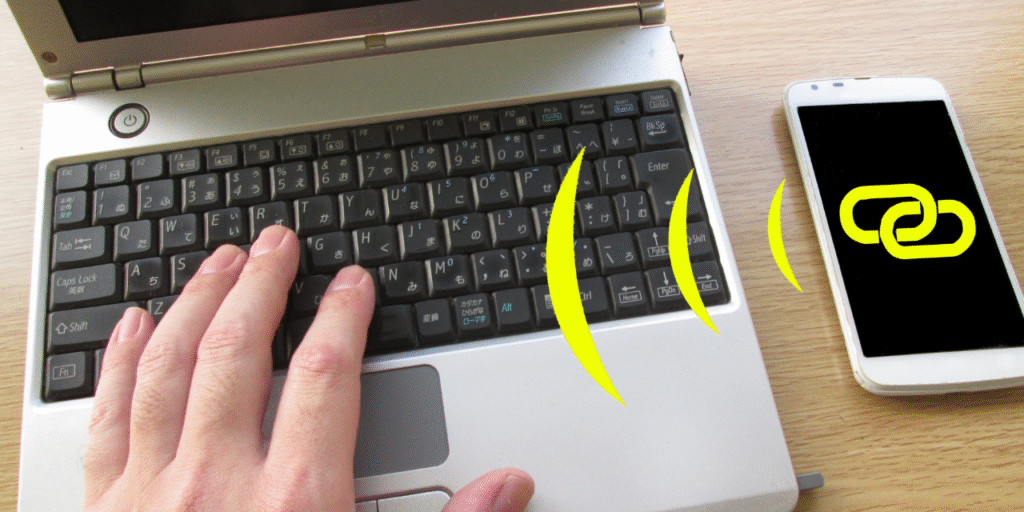Sharing your internet connection from your phone to other devices is something many people do daily. Most opt for Wi-Fi hotspots or USB tethering, but there’s another handy method called Bluetooth tethering.
This method isn’t as commonly used, but in certain situations, it turns out to be surprisingly useful. If you're trying to save battery life or need a quick, no-fuss connection, Bluetooth tethering can be a simple, low-power alternative that gets the job done.
What is Bluetooth tethering?
Bluetooth tethering is a function that enables you to share your phone's mobile data connection with another device via a Bluetooth link.
Although this connection type might be slower than Wi-Fi tethering, its real strength lies in its ability to consume less battery power. This makes it an excellent option in situations where battery life must be preserved, such as during travel or outdoor activities with limited charging opportunities.
Because of its slower speed, Bluetooth tethering works well for light tasks like checking emails, messaging, or browsing. However, it’s not meant for data-heavy activities like streaming videos or downloading large files that need faster connections.
See also: Tethering vs Hotspot: Definition, differences, and use cases
How does Bluetooth tethering work?
Bluetooth tethering starts with pairing your devices via Bluetooth, creating a secure link between them. Once paired, your phone (the host device) can share its mobile data connection with the other device without any hassle.
The second device, called the client — such as a tablet or laptop — then uses this shared connection to access the internet.
How to set up Bluetooth tethering on your phone
You can quickly set up Bluetooth tethering by following these simple steps:
- Activate Bluetooth on both devices: Start by enabling Bluetooth on the device that will share its internet connection (host) and the device that will receive the connection (client).
- Pair the devices: Within the Bluetooth settings of your devices, pair them together. Select the device you want to connect to and follow the on-screen prompts to establish a stable and secure pairing.
- On the host device:
- Navigate within your phone’s settings menu to locate the Bluetooth tethering option. This is typically found under Settings > Network & Internet > Hotspot & Tethering > Bluetooth tethering, though menu names can vary slightly.
- Enable Bluetooth tethering to start sharing your internet connection.
- On the client device:
- Go into your Bluetooth settings, find the paired host device, and select it to connect for internet access.
Pros and cons of Bluetooth tethering
When figuring out if Bluetooth tethering is right for you, it’s helpful to consider both the benefits and the downsides.
Pros:
- Lower battery consumption: Since Bluetooth tethering uses less power than a Wi-Fi hotspot, it is better for extending battery life, which is especially useful when outlets are scarce.
- Ease of setup: The process of connecting devices through Bluetooth tethering is typically straightforward, ideal for quick, one-on-one device connections without the need for additional equipment.
- No cables required: Unlike USB tethering, Bluetooth eliminates the need for physical cables, allowing for a more seamless and clutter-free setup.
Cons:
- Slower data speeds: Data transfer speeds are limited compared to Wi-Fi or USB tethering, which might hinder activities requiring fast internet connectivity.
- Limited range: Bluetooth connections are effective within a range of about 10 meters, so maintaining proximity between devices is necessary.
- Not suitable for heavy data tasks: Tasks that require significant data usage or fast speeds, such as streaming or large downloads, are not ideal for Bluetooth tethering.
When to use Bluetooth tethering
Bluetooth tethering is ideally used in specific scenarios:
- Battery conservation: Situations where maintaining battery life is critical, and the choice of Bluetooth tethering over Wi-Fi hotspots can make a tangible difference.
- Wi-Fi restrictions: Environments where setting up a Wi-Fi hotspot isn't possible, Bluetooth tethering serves as a viable alternative to keep you connected.
- Basic connectivity needs: When your internet use is restricted to light activities like sending emails or messaging, and you’re connecting only one device, Bluetooth tethering is sufficient.
Final tips for using Bluetooth tethering
To get the most out of Bluetooth tethering and ensure a smooth experience, consider these helpful tips:
- Disconnect when not in use: Remember to turn off Bluetooth tethering or unpair your devices when you're done. This saves battery and keeps your devices secure by preventing unauthorized access.
- Secure the connection: Always use a strong password or PIN when pairing your devices. Proper security measures help prevent unauthorized devices from connecting to your network and accessing your data.
- Keep devices close: Bluetooth signals weaken with distance, so keep your devices within a close range — preferably within a few meters — to maintain a stable and reliable connection. Avoid obstacles like walls or metal objects that can interfere with the signal.
- Monitor data usage: Since Bluetooth tethering shares your mobile data, keep an eye on your data plan to avoid any unexpected charges, especially if your activities increase or you forget to disable tethering after use.
- Stay updated: Make sure your device’s software is up to date. Updates often include security enhancements and improvements that can make Bluetooth connections more stable and secure.
By following these tips, you’ll ensure Bluetooth tethering remains a practical and secure way to share your internet connection when you need it most.



